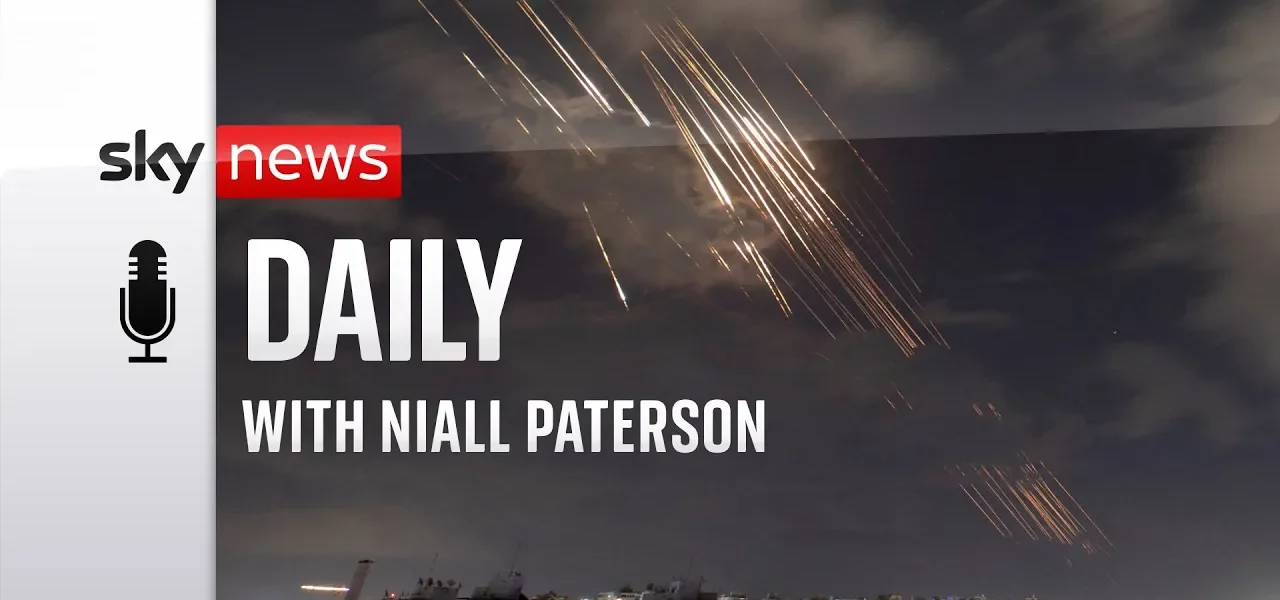Understanding the Recent Missile Attacks on Israel and the Effectiveness of the Iron Dome

This article delves into the recent missile assault launched by Iran against Israel, examining the sophisticated air defense systems employed by Israel, notably the Iron Dome. With insights from military analyst Professor Michael Clark, we explore how these systems work, their limitations, and the implications for regional security.
Introduction
In a dramatic escalation of hostilities, Iran launched nearly 200 missiles at Israel, prompting widespread alertness across the region. Sirens wailed, and citizens rushed to bomb shelters as the air defense systems kicked into action. This incident raises critical questions about the effectiveness and reliability of Israel’s air defense mechanisms, particularly the Iron Dome, which has been pivotal in intercepting incoming threats. Understanding these systems is vital in comprehending the broader implications of military confrontations in the Middle East.
The Scale of the Attack
The missile strike from Iran was unprecedented, with estimates around 200 ballistic missiles launched towards Israel. This rapid-fire assault highlights the ongoing tensions and the potential for catastrophic consequences. Here are some critical points regarding this incident:
- Sirens activated across major cities in Israel.
- Immediate alerts were sent to citizens via mobile apps.
- Despite the scale of the attack, initial reports indicated no casualties or injuries.
Israel’s Air Defense Mechanisms
Israel employs a multi-layered air defense strategy designed to thwart various types of threats. While the Iron Dome is the most recognized component, it is part of a broader architecture of defense systems. Below, we examine the key elements:
The Iron Dome
The Iron Dome is specifically designed to intercept short-range threats. It operates by detecting incoming projectiles and deciding whether to engage based on their projected impact zones. Key features include:
- Capable of intercepting short-range ballistic missiles and artillery shells.
- Utilizes advanced radar technology to track and target threats.
- Each battery can defend approximately 150 square kilometers.
Arrow and David’s Sling Systems
These systems complement the Iron Dome by targeting higher altitude threats:
- The Arrow system intercepts ballistic missiles at high altitudes.
- David’s Sling counters medium- to long-range threats.
- Integration with U.S. Patriot systems enhances overall capabilities.
The Mechanics of Missile Defense
Understanding how Israel’s air defense systems function during an attack provides insight into their effectiveness. The process begins at the detection of the missile launch:
- **Detection:** Early warning systems identify missile launches due to their intense heat signature.
- **Tracking:** Radar systems monitor the missile’s trajectory, predicting its landing zone.
- **Decision-Making:** Algorithms determine whether the incoming missile poses a threat to populated areas.
- **Interception:** If necessary, interceptor missiles are launched to neutralize the threat.
This decision-making process is crucial as it dictates the efficiency of the responses under pressure.
Limitations and Vulnerabilities
Despite the sophistication of Israel’s air defense systems, there are inherent vulnerabilities. The sheer weight of missile numbers can potentially overwhelm these defenses. Here are some considerations:
- **Overwhelm by Numbers:** A simultaneous launch of a large number of missiles can stretch resources thin.
- **Decoy Missiles:** Iran could deploy decoys to mislead defense systems, allowing real threats to evade interception.
- **Technological Limitations:** No defense system is infallible; thus, some missiles may still penetrate defenses.
Regional Implications and Future Outlook
The recent missile attacks and Israel’s responses set the stage for potential escalations in military engagements in the region. Military analysts speculate on various outcomes:
Potential for Retaliation
Following the attack, Israeli Prime Minister Benjamin Netanyahu has hinted at a robust response. The ramifications of such actions could lead to:
- Increased military strikes against Iranian targets.
- Heightened tensions with other regional players.
- Potential involvement from global powers, complicating the situation further.
Conclusion
The recent missile assault on Israel underscores the ongoing volatility in the Middle East and highlights the critical role of effective air defense systems. While Israel’s Iron Dome has proven its worth, the threat remains significant, particularly if adversaries seek to exploit its limitations. As the situation evolves, continued vigilance and strategic responses will be essential for maintaining regional stability. For further updates on this situation, visit Sky News.
“`




